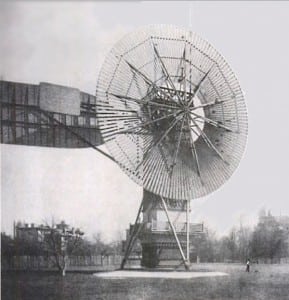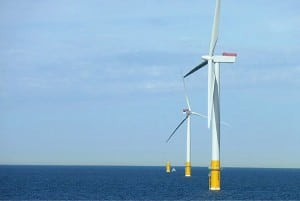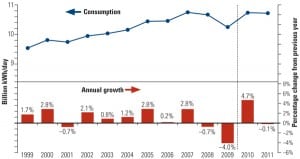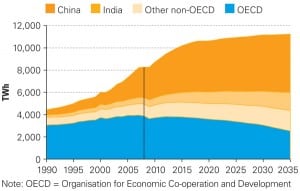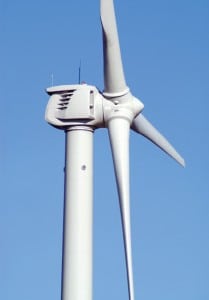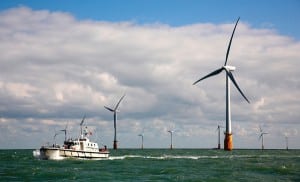Wind
-
Wind
Changing Winds: The Evolving Wind Turbine
As early as the first century A.D., wind energy was harnessed for practical purposes. Since then, turbine designs have come a long way from the archetypal post-mounted four-bladed devices. Today’s ubiquitous three-bladed designs will soon be evolving in many unexpected directions.
-
Wind
European Offshore Wind Turbine Capacity Grows 51% in 2010
Europe installed 308 new offshore wind turbines in 2010—a 51% increase in installed offshore capacity over the previous year, the European Wind Energy Association (EWEA) said in new figures released this January. The 883 MW of new capacity—worth some €2.6 billion—were installed at nine wind farms in five countries, bringing the continent’s total offshore installed wind capacity to 2,964 MW.
-
Coal
Canada’s “Clean” Image Extends to Clean Power
Canada’s extensive natural resources are the driver of its powerful economy, and energy is Canada’s single most important export. Yet policy makers across the nation are currently dealing with the consequences of a generation of under-investment in the electricity system and deciding what the new grid and supply mix should look like. Several provinces are competing to lead the charge in renewable energy and grid intelligence. Policy makers hope that such efforts will not only provide for Canada’s electricity needs but also create the green economy jobs that will drive the nation’s next generation of economic development.
-
Coal
Canada’s Provincial Power Strategies
In Canada, as in the U.S., where you live determines the type of generation technology that provides your power. Here’s how the four most energy-intensive provinces in Canada are responding to the challenge of providing reliable and cheap power in a sustainable way.
-
Coal
The U.S. Power Industry 2011: The Sequel
If Hollywood were scripting the power industry story for 2011, it would be a sequel to 2010—more of the same, but just not quite as good. Natural gas gets top billing and the accolades, wind power drops to a supporting role, and new nuclear answers the casting call but has yet to get a speaking part. Coal is like Mel Gibson—a talented Oscar winner unlikely to get another leading role. In this, our fifth annual industry forecast report, the story may be familiar, but the price of admission is going way up.
-
Coal
IEA: Global Power Demand to Surge 2.2% Annually Through 2035
Though electricity generation has entered a key period of transition—as investment shifts to low-carbon technologies—world electricity demand is set to grow faster than any other “final form of energy,” the International Energy Agency (IEA) says in its latest annual World Energy Outlook.
-
Legal & Regulatory
Solving the Renewable Integration Puzzle
In November, California voters overwhelmingly rejected an initiative that would have put the brakes on AB 32, the state’s ambitious greenhouse gas (GHG) emissions reduction law. Given the role that California has played in climate change policy, that such a vote took place only four years into the law’s implementation process and 10 years before the emissions reduction targets were to be met was a reality check on climate change policy for those on both sides of the issue.
-
Wind
Wind Energy Soars Around the World
Denmark put into operation its 12th offshore wind farm this October. The €440 million Rødsand 2 wind farm, a 90-turbine installation with a nameplate capacity of 207 MW, was erected for owner E.ON by Siemens Energy—both German firms—over a mere 122 days. The wind farm joins Rødsand I, a 72-turbine installation that began operating nearby in the Baltic Sea in 2003.
-
Wind
Finding Fault: Improving Wind Farm Availability
Survey wind turbine manufacturers about how to calculate wind farm availability and you will get countless different definitions and exceptions to the rule.
-
Wind
Top Plant: Thanet Offshore Wind Farm, Isle of Thanet, UK
In September, the 300-MW Thanet Offshore Wind Farm, the world’s largest offshore wind energy facility, began operation off the southeastern coast of England. The wind farm has 100 3-MW turbines manufactured by Vestas. The facility will generate electricity equivalent to the annual consumption of more than 200,000 British households.

